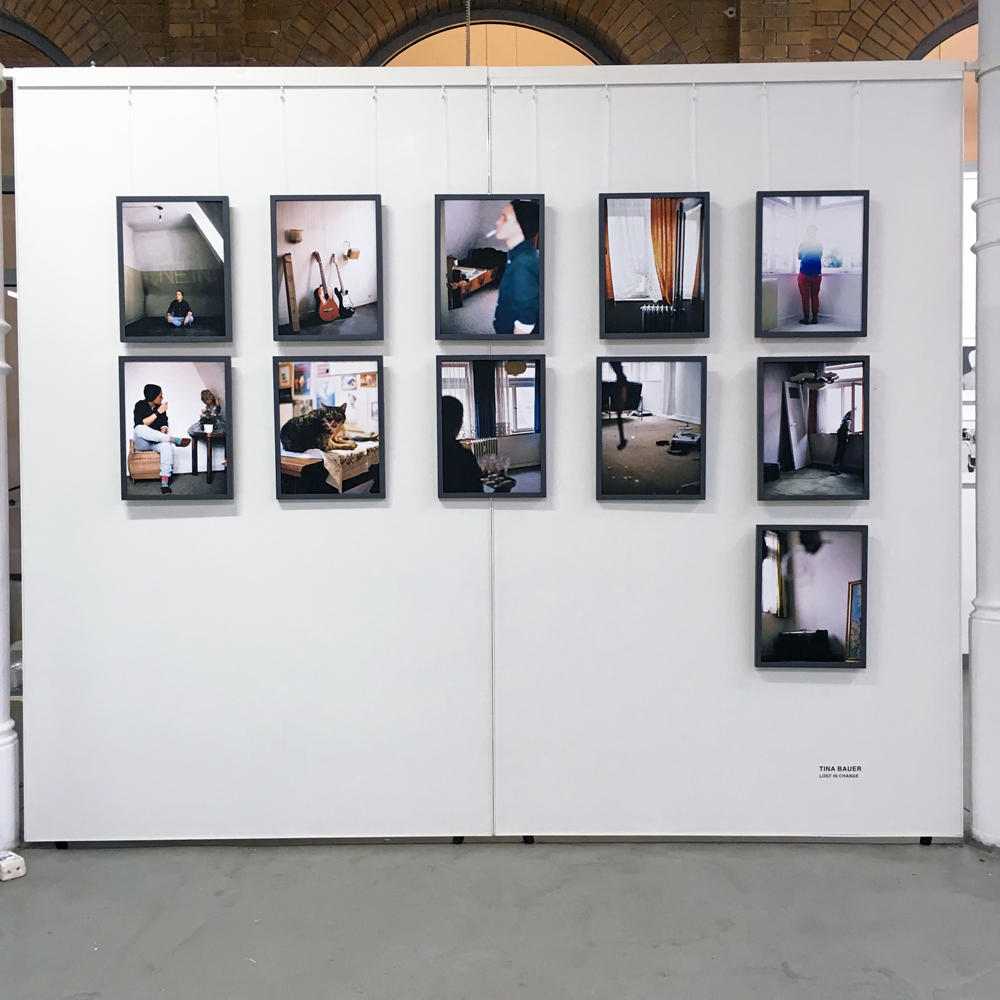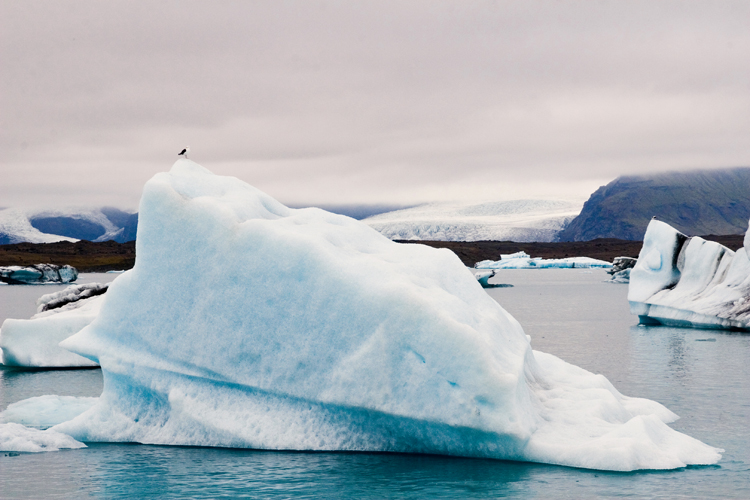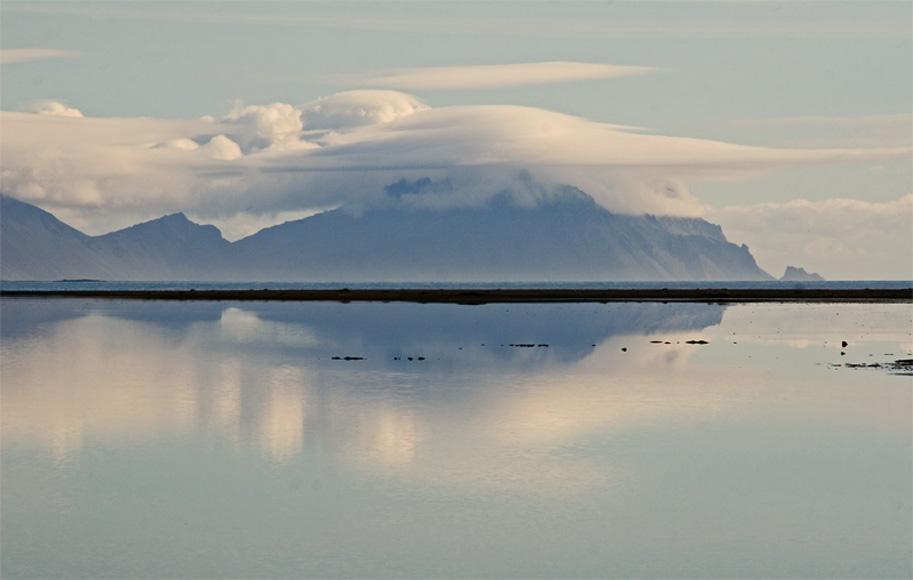Eigenwillig trotzen die Westmänner Inseln den Sturmtiefs vor der isländischen Südküste. Zwar ist es hier dank Golfstrom immer etwas wärmer als auf der Hauptinsel. Dafür weht hier aber stets der stärkste Wind. Auf der Südspitze Stórhöfði der Insel Heimaey, der größten und einzig bewohnten Insel des Archipels Westmänner, steht die windreichste Wetterstation Europas. Vielleicht machen diese Umstände die Bewohner von Vestmanna so eigenwillig – so dass die anderen Isländer gelegentlich den Kopf schütteln über ihre Landsleute auf den Westmänner Inseln. Immerhin hatten die dort rund 4000 Einwohner schon mal überlegt, von Island unabhängig zu werden. Here go to English version




 Die leichte Verschrobenheit kann aber auch daher rühren, dass die Westmänner noch mehr als andere Isländer es gewohnt sind, mit Widrigkeiten zu Recht zu kommen. So lebt der Vulkanausbruch von 1973, bei dem die Lava einige Straßenzüge unter sich begraben hat, bis heute in der Stadt weiter. Es ist gespenstisch und zugleich faszinierend am nördlichen Rand durch die Stadt zu gehen, den haushohen erkalteten Lavastrom dicht an den verschont gebliebenen Häusern direkt vor Augen. An manchen Stellen sind eingedrückte Hausruinen sichtbar – eindrucksvolle Mahnmale der Macht und Kraft der Natur. Vor fünf Jahren ist das Projekt „Pompeji des Nordens“ gestartet worden. Ein ganzer Straßenzug sollte ausgegraben und zur Touristenattraktion werden. Die Ausgrabungsstätte sollte überdacht werden, um der Verwitterung entgegen zu wirken. Jedoch fehlt das Geld. Derzeit liegt das Projekt auf Eis. Man kann jedoch entlang eines Grabens durch die Lava laufen, an einigen Stellen sind Tafeln aufgestellt mit Fotos der Häuser, die an dieser Stelle verschüttet sind.
Die leichte Verschrobenheit kann aber auch daher rühren, dass die Westmänner noch mehr als andere Isländer es gewohnt sind, mit Widrigkeiten zu Recht zu kommen. So lebt der Vulkanausbruch von 1973, bei dem die Lava einige Straßenzüge unter sich begraben hat, bis heute in der Stadt weiter. Es ist gespenstisch und zugleich faszinierend am nördlichen Rand durch die Stadt zu gehen, den haushohen erkalteten Lavastrom dicht an den verschont gebliebenen Häusern direkt vor Augen. An manchen Stellen sind eingedrückte Hausruinen sichtbar – eindrucksvolle Mahnmale der Macht und Kraft der Natur. Vor fünf Jahren ist das Projekt „Pompeji des Nordens“ gestartet worden. Ein ganzer Straßenzug sollte ausgegraben und zur Touristenattraktion werden. Die Ausgrabungsstätte sollte überdacht werden, um der Verwitterung entgegen zu wirken. Jedoch fehlt das Geld. Derzeit liegt das Projekt auf Eis. Man kann jedoch entlang eines Grabens durch die Lava laufen, an einigen Stellen sind Tafeln aufgestellt mit Fotos der Häuser, die an dieser Stelle verschüttet sind.

 Glücklicherweise ist damals niemand ums Leben gekommen, alle Bewohner wurden rechtzeitig evakuiert. Stetig floss das heiße, flüssige Gestein damals in Richtung Hafen. Die Fischerboote waren wegen des schlechten Wetters am Vortag des 23. Januar 1973 nicht ausgefahren. So wurde von den Booten aus die Lava mit Meerwasser gekühlt und der Fluss gestoppt, so dass das Hafenbecken nicht zu klein wurde.
Glücklicherweise ist damals niemand ums Leben gekommen, alle Bewohner wurden rechtzeitig evakuiert. Stetig floss das heiße, flüssige Gestein damals in Richtung Hafen. Die Fischerboote waren wegen des schlechten Wetters am Vortag des 23. Januar 1973 nicht ausgefahren. So wurde von den Booten aus die Lava mit Meerwasser gekühlt und der Fluss gestoppt, so dass das Hafenbecken nicht zu klein wurde.




Doch so unheimlich das Szenario in der Stadt ist, so beeindruckend ist die Aussicht vom Kraterrand des Eldfell: Von dort ist genau zu sehen, wie nah die Lava der Stadt kam und wo neues Land entstanden ist. Bei klarer Sicht reicht der Blick bis Vík. Und der Ausbruch des Eyafjallajökull im Frühjahr dieses Jahres, nur elf Kilometer Luftlinien entfernt, war von hier aus quasi aus der ersten Reihe zu bestaunen, wie Ruth Zohlen uns vorschwärmt. Die Deutsche lebt seit fast 30 Jahren in Vestmanna, betreibt ein Gästehaus und kennt die Insel und den Vulkan wie ihre Westentasche.
Mit ihr machen wir uns früh morgens auf, die Wärme des Vulkans Eldfell hautnah zu erfahren. Wir steigen bis zum Kraterrand. Dort ist das Gestein wunderschön rot. Ruth kennt die Stellen, legt einige Steine zur Seite und vergräbt eine runde Blechdose in einem Loch. 20 Minuten später genießen wir das köstlichste selbst gebackene Brot: gebacken durch die Hitze des Vulkans. „Wenn man nur etwa einen Meter gräbt, ist es um die 450 Grad heiß“, weiß Ruth. An diesem stürmischen Morgen mit gefühlten 15 Grad minus bäckt die Hitze nicht nur das Brot, sondern wärmt uns auch den Po auf den handwarmen Steinen.
Die Westmänner Inseln liegen wie der Eyjafjallajökull auf der aktiven Vulkanzone auf dem mittelatlantischen Rücken. So konnte sich 1963 ein weiteres einzigartiges Naturschauspiel abspielen: Südlich von Heimaey tat sich plötzlich der Meersboden auf, heißes Gestein aus dem Erdinneren wurde ausgespuckt bis die Insel Surtsey entstand. Seitdem steht die Insel unter Naturschutz, dient Wissenschaftler zu Forschungszwecken wie schnell Leben entsteht und sich entwickelt. Niemand darf ansonsten Surtsey betreten. Empfehlenswert dazu der Artikel in „mare“: „Labor des Lebens“.
Die Zeit vergeht rasend schnell auf Heimaey – obwohl die Insel gerade mal 13 Quadratkilometer groß ist, gibt es viel zu entdecken und erleben. Selbst als wir mit der Fähre die Insel verlassen und durch die enge Mündung zwischen Eldfell-Lava und riesigen Felsen fahren, trumpfen die Westmänner noch mit einer Attraktion auf. In der Klettsvík-Bucht zwischen den knubbeligen, steilen Felsen sind Überreste des Geheges von Keiko sichtbar. Der Orka, bekannt als „Free Willy“ aus dem gleichnamigen Film, hat dort am Rand des Fischerhafens bis vor wenigen Jahren abgeschottet von der Außenwelt gelebt. Ein stabiles Netz trennte die Bucht vom offenen Ozean. 1979 war der Wal an der isländischen Ostküste gefangen worden. Ein örtliches Aquarium war die erste Station seiner Odyssee durch die Menschenwelt. Über das kanadische Ontario gelangte der Wal 1985 nach Mexiko City. In einem Vergnügungspark balancierte Keiko Bälle bis er von einem Talentscout Hollywoods entdeckt wurde – die ganze Geschichte der Odysee des Schwertwals nachzulesen im Magazin Spiegel.
English version
The volcano Eldfell revives the Westman Islands
Idiosyncratic the Westman Islands brave the storm downs offshore the south coast of Iceland. While thanks to the Gulf Stream it is always a bit warmer than on the main island. But it blows always the strongest wind. On the southern point Stórhöfði of the island Heimaey, the largest and only inhabited island of the archipelago’s Westman Islands, is the highest wind weather station in Europe. Perhaps these circumstances the people of Vestmanna do so idiosyncratic – so the other Icelanders sometimes shake their heads over their compatriots on the Westman Islands. The 4000 residents had thought to become independent from Iceland.
The slight eccentricity can also stem from the fact that the people of Vestmanna are used to come with adversity and rightly more than other Icelanders. So the volcanic eruption of 1973, in which the lava has buried a few blocks between them, is still alive in the city. It is spooky and fascinating at the same moment walking through the city, the towering lava close to the remaining houses in front of his eyes. In some places depressed house ruins are visible – impressive monuments of power and force of nature. Five years ago the project „Pompei of the North“ started. An entire street was dug up and be a tourist attraction. The archaeological site should be considered to act contrary to the weathering. But there is not enough money. Currently the project is stopped. But you can walk along a trench through the lava, in some places are tables set up with photos of the houses that were buried here. Fortunately, at that time no one was killed, all residents were evacuated in time. Continuously flowing the hot, molten rock at that time for the habour. The fishing boats were still in harbour because the bad weather the day before the 23rd January 1973. From the boats the lava cooled with sea water and stopped the flow, so that the dock not spill.
But as scary scenario in the city is so impressive is the view from the crater of Eldfell: from there is exactly to see how close the lava came to the town and were new country was born. On a clear day the view extends to Vik. And the outbreak of Eyafjallajökull earlier this year, only eleven kilometers away, was to marvel at here, Ruth Zohlen raves. The German has been living for almost 30 years in Vestmanna, manage a guesthouse.
Early in the morning we begin to experience the volcano Eldfell. We climb to the crater rim. There the rocks are beautifully red. Ruth knows the locations, sets aside a few stones and buried a round tin can in a hole. 20 minutes later, we enjoy the most delicious homemade bread baked by the heat of the volcano. „If you just dig a meter, it’s 450 degrees hot“, says Ruth. On that stormy day with wind chill minus 15 degrees, the heat not only bakes the bread, but also warms our butts.
The Westman Islands are like the Eyjafjallajökull on the active volcanic zone on the Mid-Atlantic Ridge. 1963 was another unique spectacle of nature: South of Heimaey hot rock from inside the earth was spat came to the island of Surtsey. Since the island is a nature reserve, scientists used for research purposes, how fast life is formed and develops. No one may otherwise enter Surtsey.
Time goes very fast on Heimaey – although the island is just 13 square kilometers in size, there is much to discover and experience. Even after leaving as the ferry to the island and pass through the narrow entrance between Eldfell lava and huge rocks, there is another attraction. In the Klettsvík Bay are ruins of the enclosure from Keiko. The orca, known as „Free Willy“ from the film, has there lived isolated from the outside world. A stable network separated the bay from the open ocean. In 1979, the Icelandic whale had been caught in the eastern coast. A local aquarium was the first stop on his odyssey through the human world. About the Canadian Ontario in 1985, after the whale reached Mexico City. In an amusement park, Keiko balanced balls until he was discovered by a talent scout in Hollywood.



Schreibe einen Kommentar